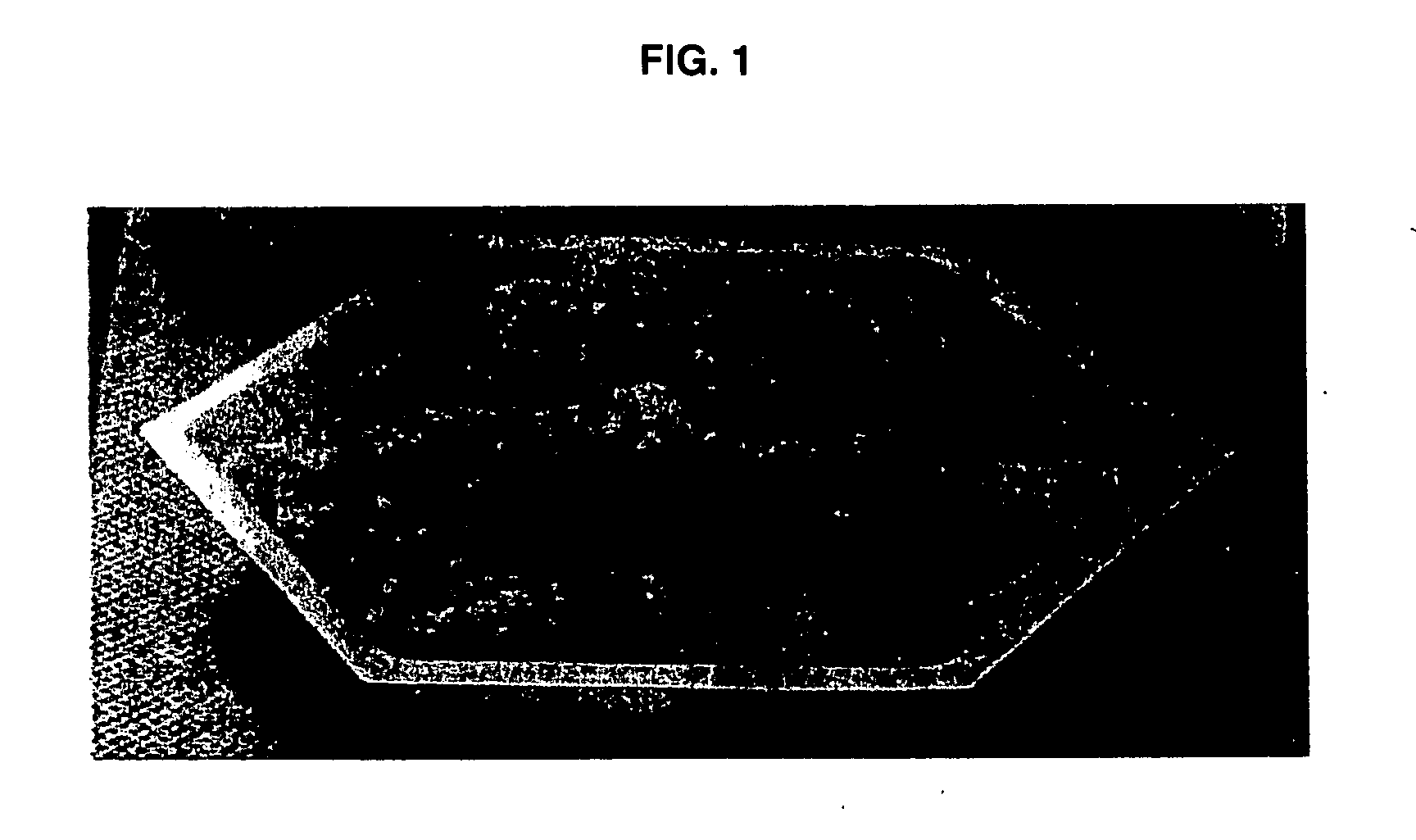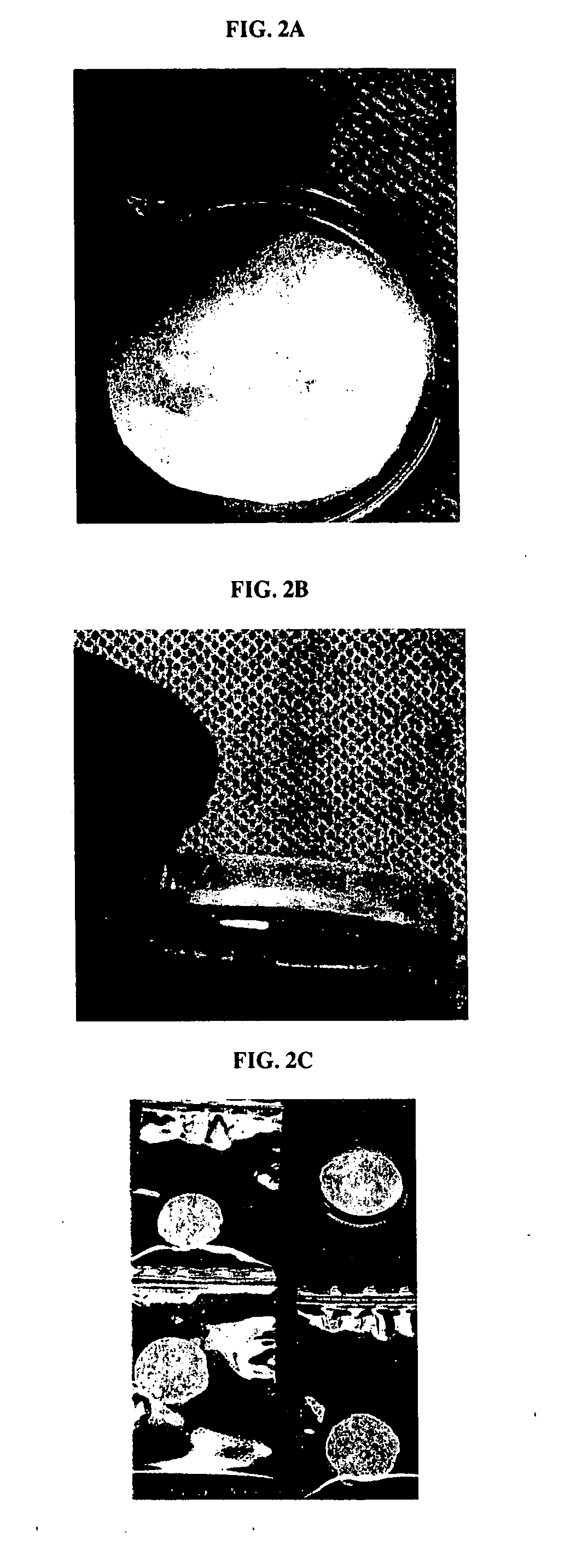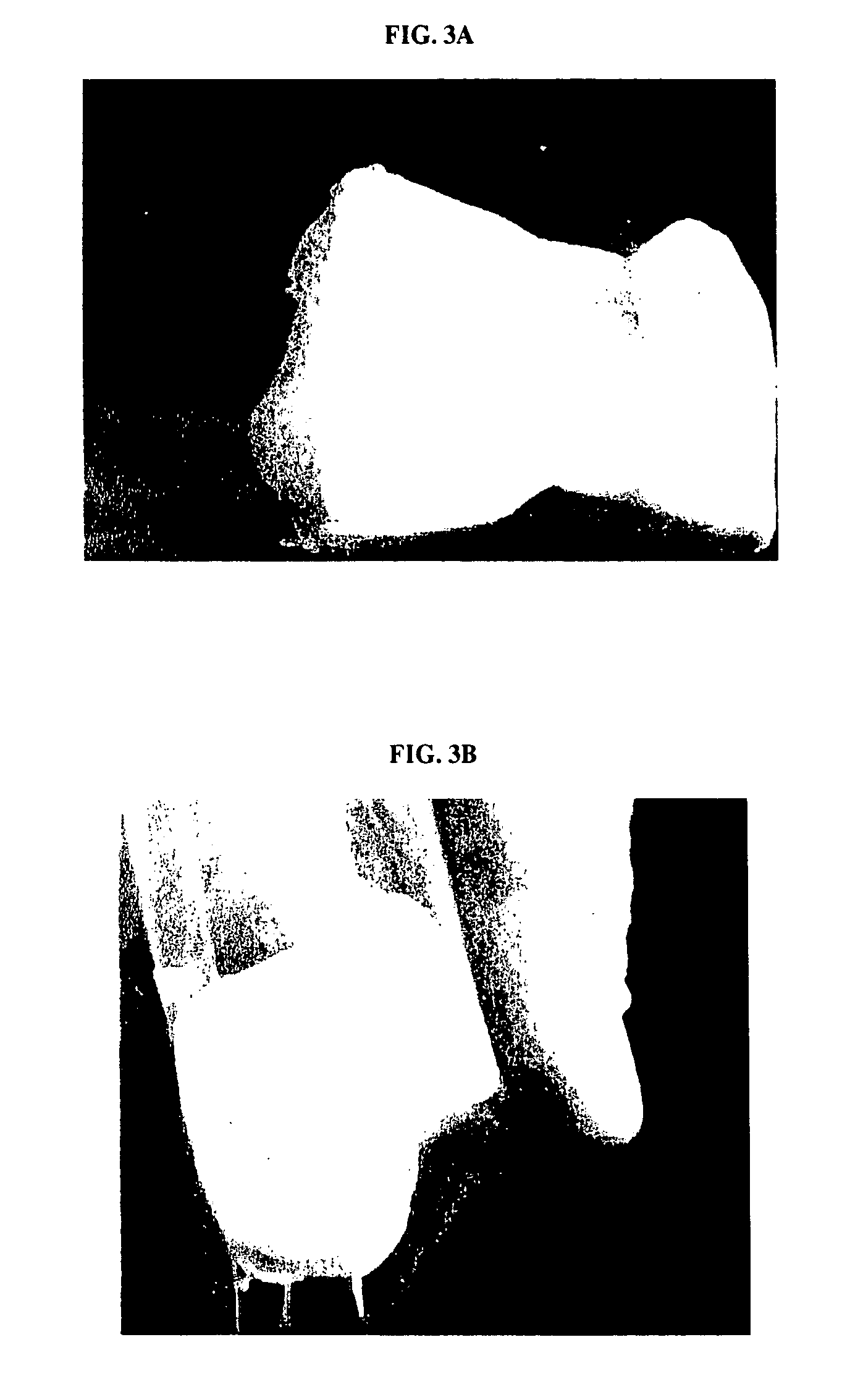Muscle-based grafts/implants
- Summary
- Abstract
- Description
- Claims
- Application Information
AI Technical Summary
Benefits of technology
Problems solved by technology
Method used
Image
Examples
example 1
Preparation of a Slurry of Allogeneic Human Muscle
[0111] Skeletal muscle was removed from a donor cadaver and cut into chunks (20 mm×20 mm). The chunks of skeletal muscle were defatted, deantigenized and soluble protein was removed by subjecting the muscle tissue to cyclically alternating pressure and vacuum in the sequential presence of the isopropyl alcohol, hydrogen peroxide and a detergent. The method is fully described in assignee's U.S. Pat. No. 6,613,278, entitled “Tissue Pooling Process,” which issued to Mills et al., on Sep. 2, 2003; U.S. Pat. No. 6,482,584, entitled “Cyclic implant perfusion cleaning and passivation process,” which issued to Mills, et al. on Nov. 19, 2002; and U.S. Pat. No. 6,652,818, entitled “Implant Sterilization Apparatus,” which issued to Mills et al., on Nov. 25, 2003, all of which are incorporated herein by reference in their entirety. After the above cleansing process, the defatted and non-antigenic muscle tissue was lyophilized to remove the mois...
example 2
Formulation Comprising the Slurry of Example 1 and DBM
[0114] The slurry of Example 1 was degassed via centrifugation. After the degassing, the slurry was transferred to a mixing bowl. DBM was added and mixed to uniformity at ratios of 0.1%, 1%, 5%, 10%, 20% and 30% (DBM weight to slurry weight).
[0115] A portion of each of the above slurries containing the DBM were poured into molds and allowed to dry at room temperature with positive airflow. The dried products produced a series of muscle based tissue implants in the form of films with the differing amounts of DBM embedded therein.
[0116] A second portion of the slurries from above was poured into molds, frozen, and lyophilized. The dried products produced a series of sponge-like tissue implants having increasing amounts of DBM therein.
example 3
Formulation Comprising the Slurry of Example 1 and CCC
[0117] The slurry of Example 1 was degassed via centrifugation. After the degassing, the slurry was transferred to a mixing bowl. CCC was added and mixed until uniform at a ratio of 50% (CCC volume to slurry volume). The slurry containing CCC was poured into a mold, frozen, and lyophilized. This dried product produced a tissue implant in the form of a sponge with CCC imbedded therein.
[0118] The degassed slurry from above was transferred to a mixing bowl, where 60% CCC (CCC volume to slurry volume) and 10% DBM (DBM volume to slurry volume) were added to the degassed slurry with mixing. Mixing continued until a uniform appearing mixture was formed. The slurry was poured into a cube shaped mold, frozen, and lyophilized. This dried product produced a cube shaped tissue implant having CCC and DBM imbedded therein.
PUM
| Property | Measurement | Unit |
|---|---|---|
| Fraction | aaaaa | aaaaa |
| Fraction | aaaaa | aaaaa |
| Fraction | aaaaa | aaaaa |
Abstract
Description
Claims
Application Information
 Login to View More
Login to View More - R&D
- Intellectual Property
- Life Sciences
- Materials
- Tech Scout
- Unparalleled Data Quality
- Higher Quality Content
- 60% Fewer Hallucinations
Browse by: Latest US Patents, China's latest patents, Technical Efficacy Thesaurus, Application Domain, Technology Topic, Popular Technical Reports.
© 2025 PatSnap. All rights reserved.Legal|Privacy policy|Modern Slavery Act Transparency Statement|Sitemap|About US| Contact US: help@patsnap.com



